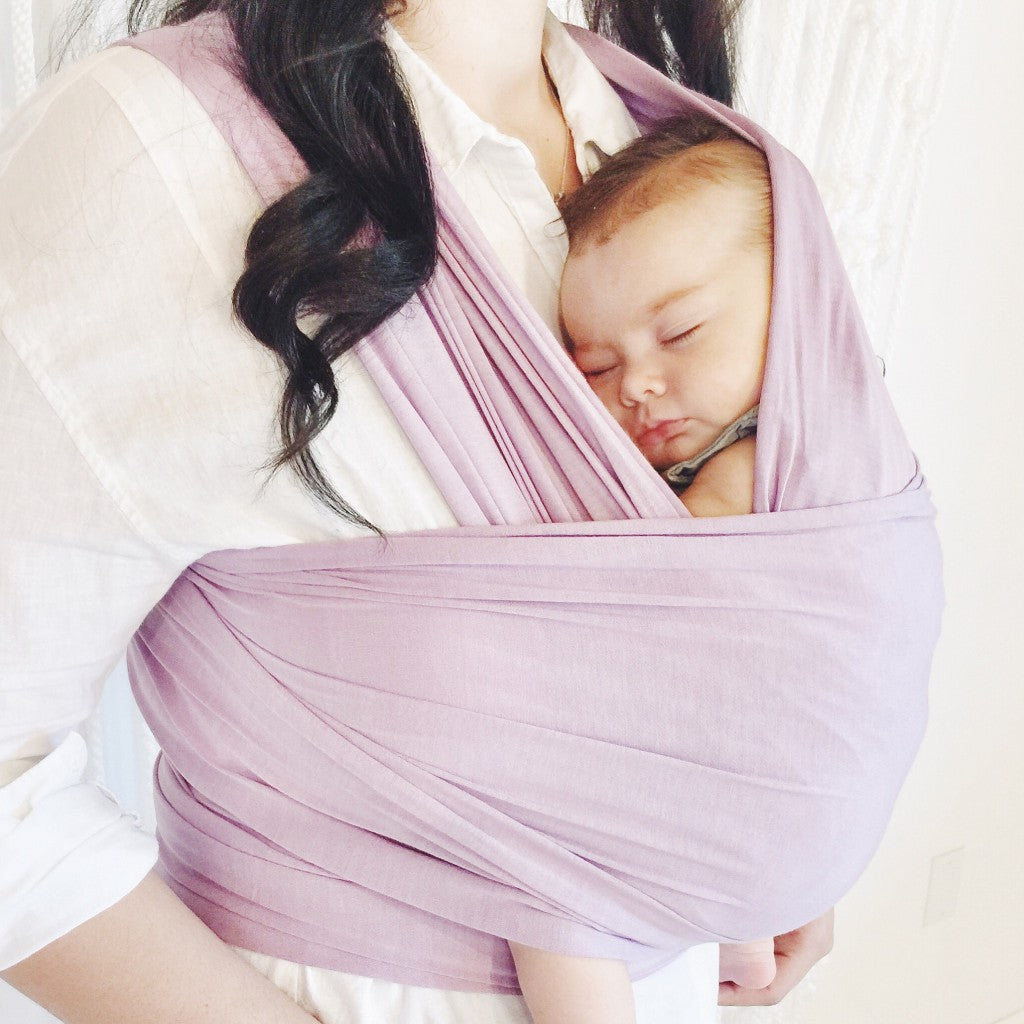
Just when you thought Solly Baby had given you enough reasons to choose their wrap with the beautiful design and easy how-to videos, I’m here to share some research-based reasons why you should consider babywearing! I teach clients in my breastfeeding classes about the benefits of Kangaroo Mother Care, also known as Skin-to-Skin. Kangaroo Mother Care is when an infant is placed on the maternal chest with just a diaper on, and blankets are placed over the top. This practice has been shown to aid in stabilizing infants after birth. It is important to practice skin-to-skin not only immediately after birth, but the benefits can extend well beyond that time. Babywearing allows mother and infant to practice skin-to-skin contact wherever they are. With Solly Baby wrap, you and your baby can enjoy the benefits of Kangaroo Mother Care up to one year of age! Today, I’m going to give you some research-based reasons why to consider babywearing for your infant.
 Physiological Benefits to Mom and Infant - Research has shown that skin-to-skin contact creates a more stable environment for both mom and baby. The physiological benefits to the infant include temperature regulation, heart rate consistency, blood sugar control, quicker weight gain, improved sleep patterns, increased immunity, and an easier time breastfeeding overall. Benefits to the mother include a better milk supply, quicker recovery, reduced risk of postpartum depression, sleep patterns regulated to the infants’, and ability to breastfeed longer (Sywulak-Herr, 2002, p. 290). Enhanced Mood and More Rest - For a long time, there was a notion of “take the baby, so Mom can rest”. Now, we know that a mother can get more worry-free rest with the infant closeby (Merewood, 2014, p. 510). Babywearing facilitates this closeness. Skin-to-skin contact can stimulate oxytocin release, a hormone that creates a very relaxing effect for mothers. When mothers and infants are separated, it can create mutual anxiety; which means more infant crying and less restful sleep. Ease the Transition - Being born is hard work! It is quite a shock for infants that have spent nine months in a warm, protective environment to transition to the outside world. They are used to constant soothing motion and the sound of their mother’s heartbeat and voice. No wonder why infants are most comfortable in skin-to-skin contact. Babywearing is a great option to extend the many benefits of Kangaroo Mother Care beyond the first few days postpartum.
Physiological Benefits to Mom and Infant - Research has shown that skin-to-skin contact creates a more stable environment for both mom and baby. The physiological benefits to the infant include temperature regulation, heart rate consistency, blood sugar control, quicker weight gain, improved sleep patterns, increased immunity, and an easier time breastfeeding overall. Benefits to the mother include a better milk supply, quicker recovery, reduced risk of postpartum depression, sleep patterns regulated to the infants’, and ability to breastfeed longer (Sywulak-Herr, 2002, p. 290). Enhanced Mood and More Rest - For a long time, there was a notion of “take the baby, so Mom can rest”. Now, we know that a mother can get more worry-free rest with the infant closeby (Merewood, 2014, p. 510). Babywearing facilitates this closeness. Skin-to-skin contact can stimulate oxytocin release, a hormone that creates a very relaxing effect for mothers. When mothers and infants are separated, it can create mutual anxiety; which means more infant crying and less restful sleep. Ease the Transition - Being born is hard work! It is quite a shock for infants that have spent nine months in a warm, protective environment to transition to the outside world. They are used to constant soothing motion and the sound of their mother’s heartbeat and voice. No wonder why infants are most comfortable in skin-to-skin contact. Babywearing is a great option to extend the many benefits of Kangaroo Mother Care beyond the first few days postpartum.  For more, please follow me on instagram
For more, please follow me on instagram  References: 1. Merewood, Anne. (2014). Skin-to-skin at Birth: A New Model of Care. Journal of Human Lactation, 30. 509-510. doi:10.1177/0890334414549768 2. Sywulak-Herr, C.M. (2002). Video Review: Kangaroo Mother Care: Rediscover the Natural Way to Care for Your Newborn Baby. Journal of Human Lacation, 18, 289-290. doi: 10.1177/089033440201800324
References: 1. Merewood, Anne. (2014). Skin-to-skin at Birth: A New Model of Care. Journal of Human Lactation, 30. 509-510. doi:10.1177/0890334414549768 2. Sywulak-Herr, C.M. (2002). Video Review: Kangaroo Mother Care: Rediscover the Natural Way to Care for Your Newborn Baby. Journal of Human Lacation, 18, 289-290. doi: 10.1177/089033440201800324








